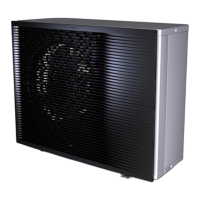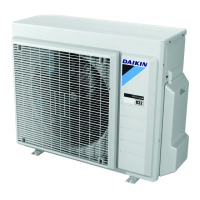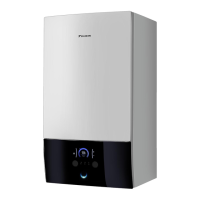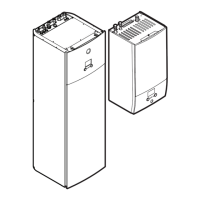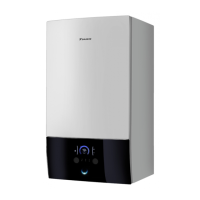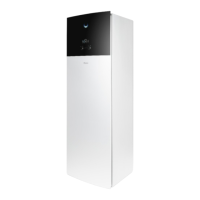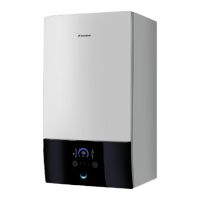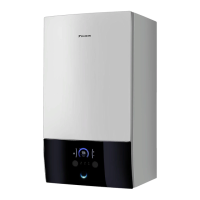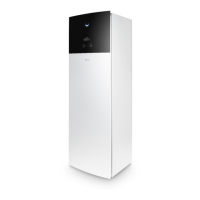8 | Piping installation
Installer reference guide
106
ERLA11~16D + EBBH/X11+16D
Daikin Altherma 3 R W
4P643603-1B – 2022.05
a If a multilingual fluorinated greenhouse gases label is delivered with the unit (see
accessories), peel off the applicable language and stick it on top of a.
b Factory refrigerant charge: see unit name plate
c Additional refrigerant amount charged
d Total refrigerant charge
e Quantity of fluorinated greenhouse gases of the total refrigerant charge
expressed as tonnes CO
2
equivalent.
f GWP = Global warming potential
NOTICE
Applicable legislation on fluorinated greenhouse gases requires that the refrigerant
charge of the unit is indicated both in weight and CO
2
equivalent.
Formula to calculate the quantity in CO
2
equivalent tonnes: GWP value of the
refrigerant × total refrigerant charge [in kg] / 1000
Use the GWP value mentioned on the refrigerant charge label.
2 Fix the label on the inside of the outdoor unit. There is a dedicated place for it
on the wiring diagram label.
8.5 Preparing water piping
8.5.1 Water circuit requirements
INFORMATION
Also read the precautions and requirements in the "2 General safety
precautions"[410].
NOTICE
In case of plastic pipes, make sure they are fully oxygen diffusion tight according to
DIN4726. The diffusion of oxygen into the piping can lead to excessive corrosion.
▪ Connecting piping – Legislation. Make all piping connections in accordance with
the applicable legislation and the instructions in the "Installation" chapter,
respecting the water inlet and outlet.
▪ Connecting piping – Force. Do NOT use excessive force when connecting the
piping. Deformation of the piping can cause malfunctioning of the unit.
▪ Connecting piping – Tools. Only use appropriate tooling to handle brass, which is
a soft material. If NOT, pipes will get damaged.
▪ Connecting piping – Air, moisture, dust. If air, moisture or dust gets into the
circuit, problems may occur. To prevent this:
- ONLY use clean pipes.
- Hold the pipe end downwards when removing burrs.
- Cover the pipe end when inserting it through a wall, to prevent dust and/or
particles from entering the pipe.
- Use a decent thread sealant to seal connections.
- When using non-brass metallic piping, make sure to insulate both materials
from each other to prevent galvanic corrosion.
- Because brass is a soft material, use appropriate tooling for connecting the
water circuit. Inappropriate tooling will cause damage to the pipes.
▪ Closed circuit. Use the indoor unit ONLY in a closed water system. Using the
system in an open water system will lead to excessive corrosion.

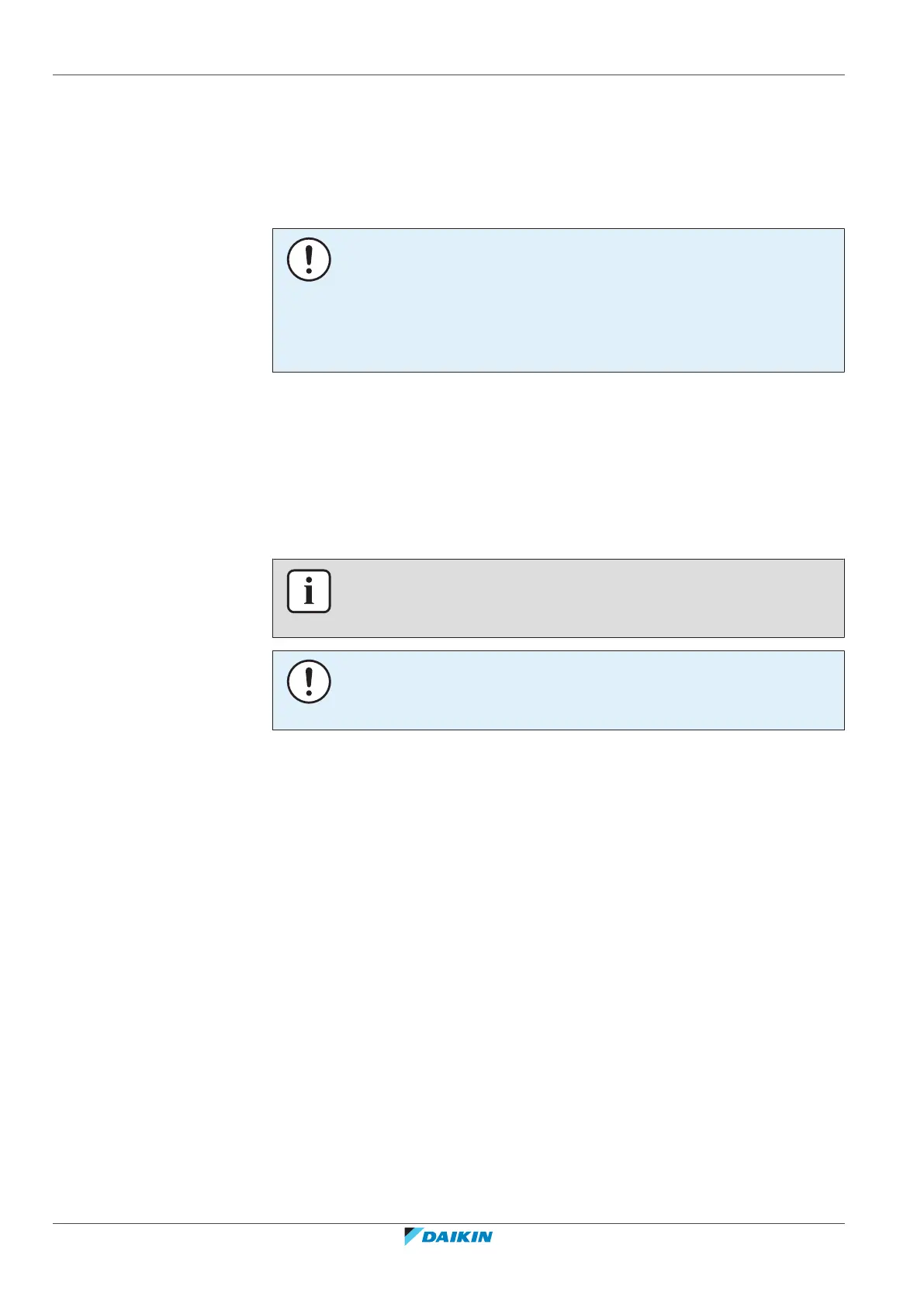